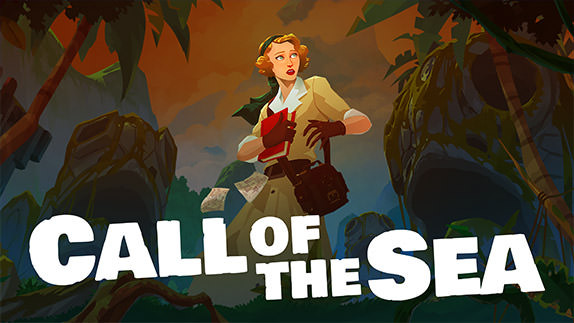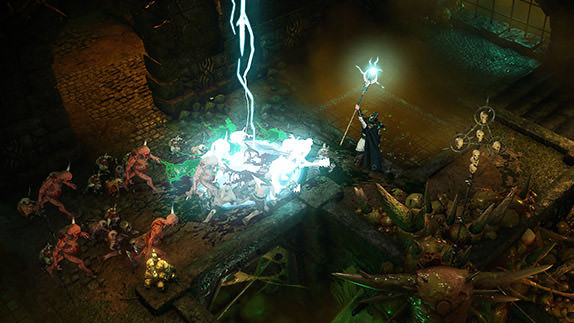The Last Federation Review

 By Marcus Jones | May 6, 2014
By Marcus Jones | May 6, 2014
The Last Federation is massive. There is no other way to put it without being grandiose. The game is large and intimidating, and the tags of “simulation” and “strategy” don’t necessarily cover the entire gamut of what players will face. Players should prepare to spend some time wrapping their head around this game to really get into the groove of it.
Last Federation is a strategy game, on par with other massive 4X titles. Turn-based, players will take on the role of the last remaining Hydral, a race (almost) wiped out by an opposing one through war and attrition. The Hydrals were a commanding force within the galaxy, bringing together many of the worlds under a singular banner either through rule or ruin. Betrayed and wiped out, the last remaining one (the player) is tasked with carrying out the final mission of creating that true, lasting federation. This is done by any means necessary, even eliminating as many of the other races as necessary.
Playing the game is broken into two very distinct sections of gameplay: combat and the galaxy map. The galaxy map is where much of the political dealings and maneuvering occurs, and where players are able to interact with the races. There are eight planets in all, all home to a specific race. These range from the Burlusts, a ferocious and warring race with a chieftain society, to the Andors, a sentient race of robots that maintain a utopian society.
Dealing with the races is similar across all of them, though how they respond to players actions differs from race to race. Some respond well to threats while some respond well to releasing prisoners of war. It depends. Each action builds their affinity towards the player in a direction, either towards detested and hated or towards friend and ally. This is where it starts to become tricky managing the political dealings. Helping one race out by say, delivering spaceflight technology, is considered almost treason by other races. They want to maintain their miniscule hold on the galaxy in whatever way they can and by the player introducing new foes to the mix, it makes everything a bit tougher for them. However, dealing with races is not always required. It’s not required, but damn would I not be surprised to piss off a race from sneezing.
Think of it like a Civilization game where the player is ultimately looking from the sidelines in. That lone remaining Hydral can influence and change the course of a race’s expansion, helping to lead them into direct conflict with others or into a peaceable solution. Players are able to work directly with races and research new technology (that the player also gets a copy of, for personal use of course), but ultimately the course of their progression still continues as time marches on within the game. The player acts as a mercenary, a behind-the-scenes dealer whispering into the ears, or whatever they have for ears, of the various races.
After bolstering enough of an alliance with a race or two, players are able to create a Federation. This is where it begins to get tricky because the game is not over just then. Every race needs to be in the federation or dead, and sometimes just because a race joined does not mean they won’t try to kill the player. Everything is still up for grabs until the last race either joins or dies.
While that is occurring, players are able to do a lot as a lone mercenary, aside from political dealing. There is a black market available, where players can hire scientists, construction workers, or even buy tech and sell slaves. Scientists and construction workers speed up any projects going on, while slaves just provide money and hatred from the races. The technology though is useful, both as a bargaining chip in politics and as a way to upgrade the player’s ship.
The overmap and political intrigue of the game is deep. Deep enough that I had trouble early on keeping up with just what the hell was happening. It was great that I could zoom over to a planet and immediately start trying to build up a friendship with whatever I can bribe them with in technology, but I always hit a wall. I’d run out of stuff to do and get bored with the race, mutter a “see ya!” and move onto the next one. Meanwhile, I’d have war break out on 3 planets and not know what I missed in the span of a few months of in-game time. While the notifications for events are helpful, there are many and they never stop.
However, speaking of war, this is where combat comes into play. Combat is turn-based and players control their primary flagship throughout the game. It is upgradeable through research or buying Hydral tech, but it can be a powerhouse. During combat, turns progress in planning-execution setup. The first thing to do is decide on ship movement, then weapons and attack, and then execution, where the game will then take over and follow the commands. It is neat to watch the ballet occurring in space when the execution phase begins and everything happens at once.
While it seems like a bland experience, there is a lot of strategy and planning involved in the combat. The ship only has so much power available, so it is important to balance engine power, shield power, and weapon power with the limited pool. Dump more into engines and the ship becomes more maneuverable and faster at the expense of shields and weapons. Dump it into shields and never get damaged, while increased weapon power can rip through opponents’ hulls. On top of this, the ship carries up to three weapons and has the ability to gain special moves later on. The weapons range from a minigun, which is excellent at destroying small fighter craft, to energy lances that pierce ship hulls with ease. The game will provide insight on weapons to use against enemies, but it is very important to use the right one for maximum damage. The special abilities also provide boosts, like increasing shields to 100% capacity or a virus that commandeers smaller ships nearby. The battles can become quite complex at times, but they can also be easy with the right setup and enemies. While I enjoyed this part of the game the most, I also occasionally found myself being destroyed.
The game is massive, enough so that a single playthrough can take an extended amount of time. But it is worth it though; short term investments in the game won’t be as rewarding. Certain technology will not even unlock in the game until later years are reached, almost guaranteeing an investment of time.
I will say the game will not be one for everyone. The quick start game with the tutorial is a nice way to help players ease into it. Tooltips are not constant, but tend to arrive at great points and provide a great deal of info. For players looking to dive into more of the game on after some experience, the Advanced Mode lets players pick and choose their settings without all of the help. There is even an Ironman option to change settings to “Save and Quit” rather than save and exit out, and it saves automatically after big events. I think the most interesting piece though is the Observer Mode, available to players that just want to watch the game and saga unfold without any of their influence.
Simply Put
Aside from the major investment of time and learning curve involved with the game, there is a core of good gameplay to it. It just happens to take a very long time to dig out of the mire. I can easily foresee there being a number devoted fans to the game, but I’m not sure The Last Federation will be a widespread hit due to the investment required.
Note: The Last Federation was reviewed on PC. A digital copy of the game was provided by the publisher/developer.




